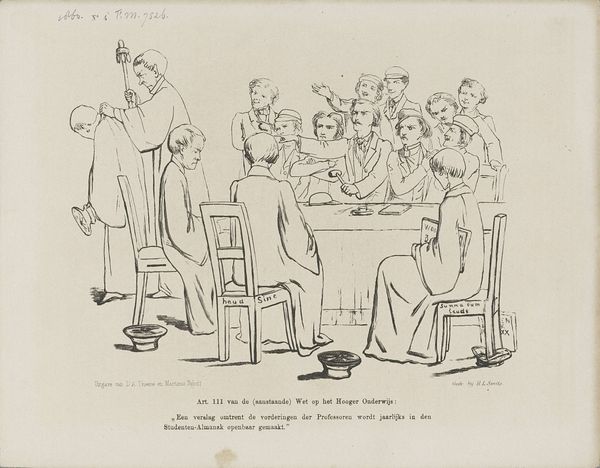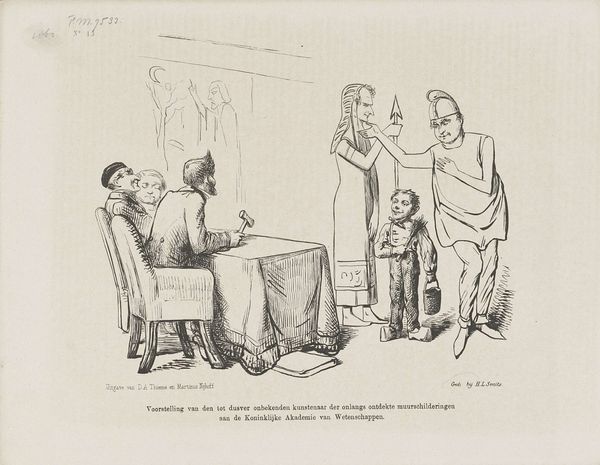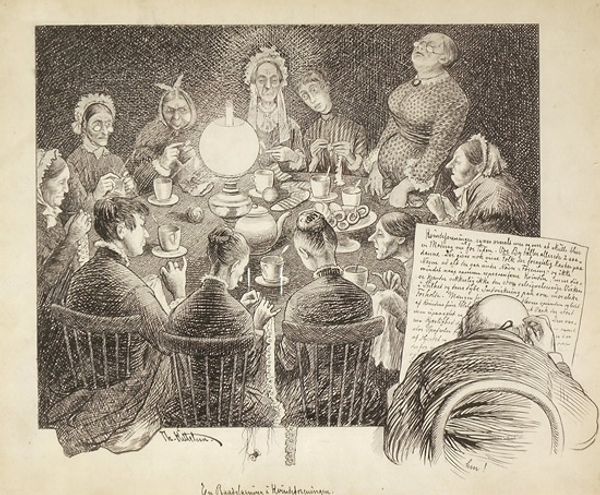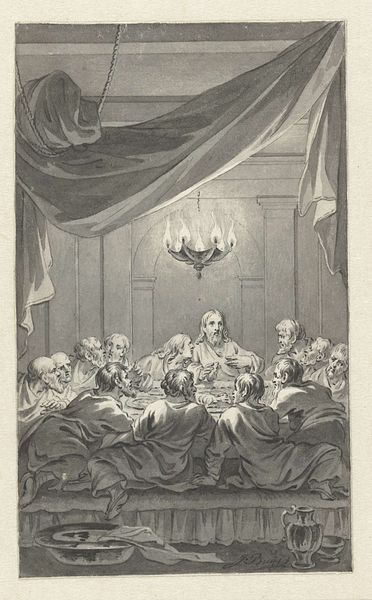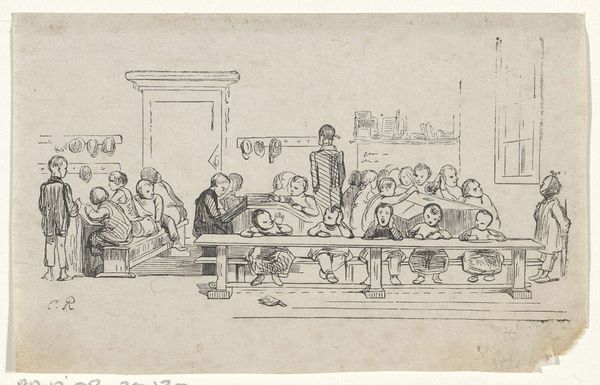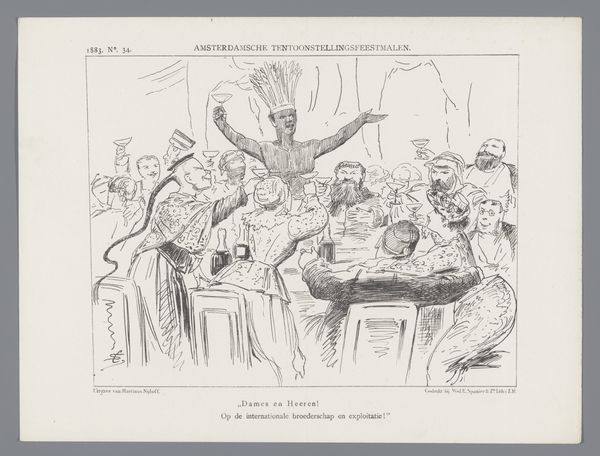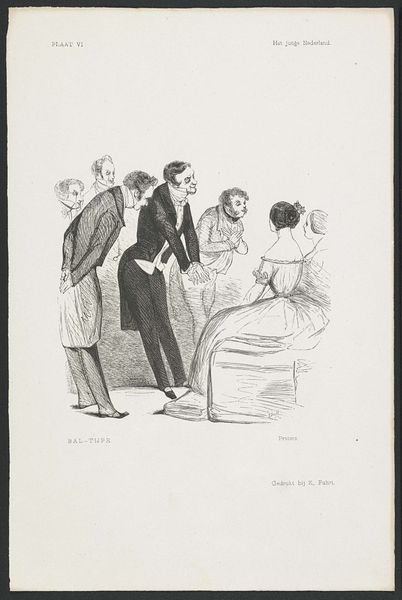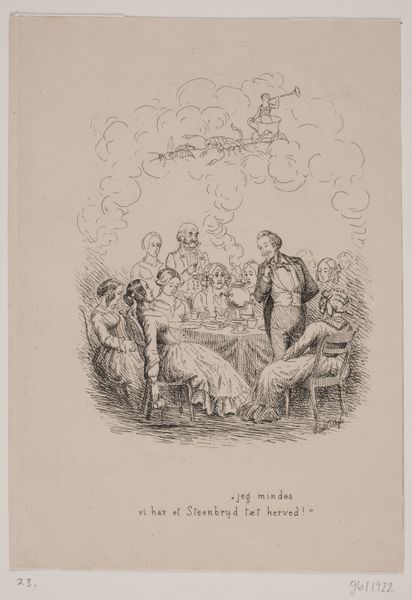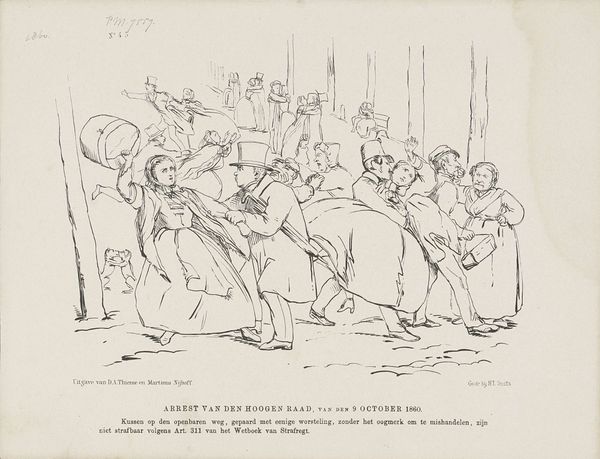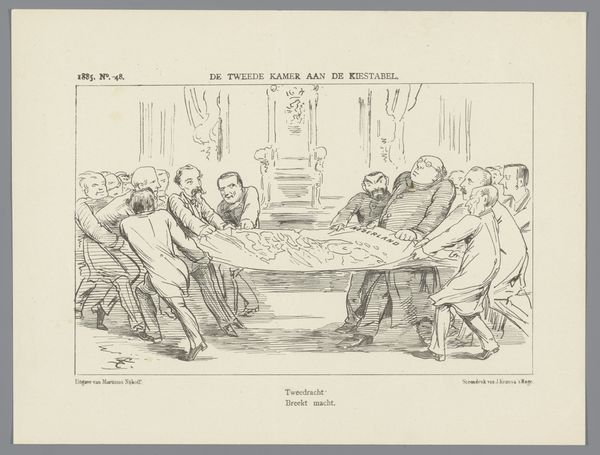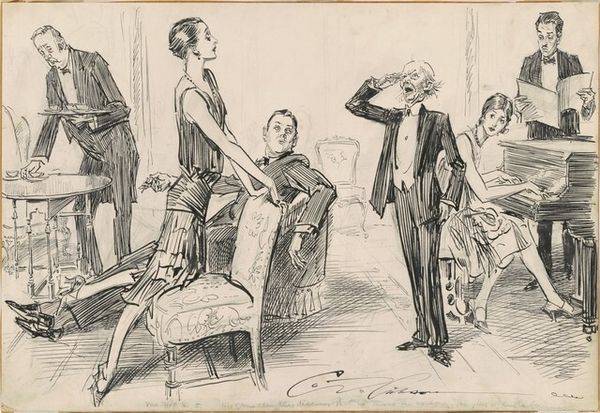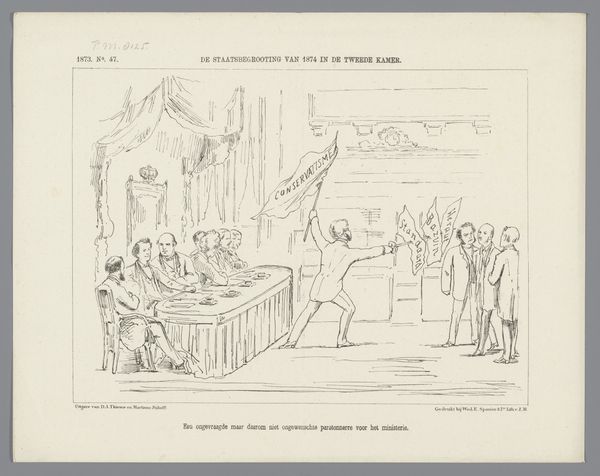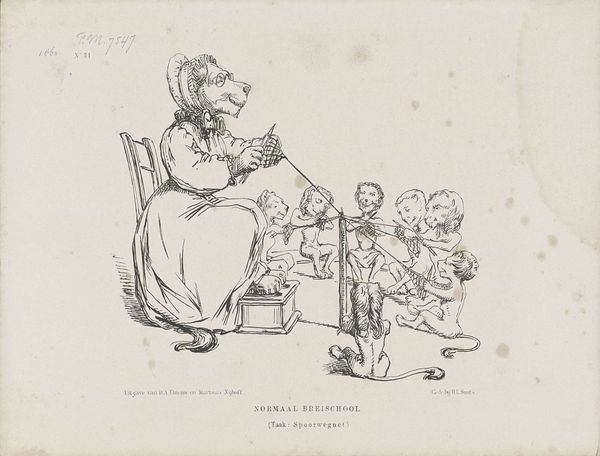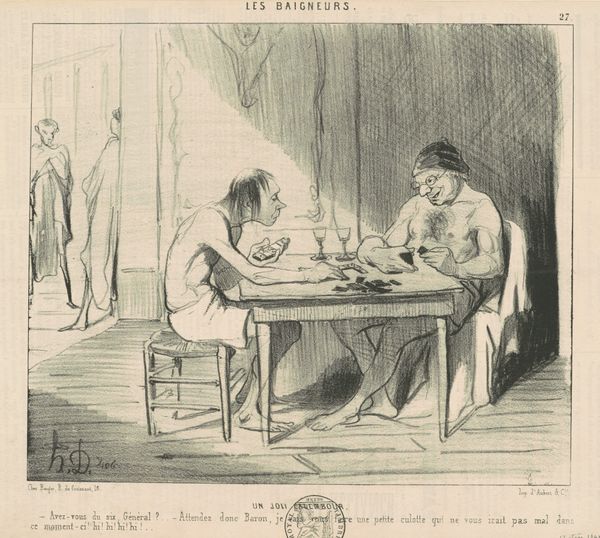
Spotprent op de oproep van de Koninklijke Akademie tot het opsporen van overblijfsels van de vaderlandse kunst, 1860 1860
0:00
0:00
drawing, print, ink, pen
#
drawing
#
comic strip sketch
#
imaginative character sketch
#
16_19th-century
#
quirky sketch
# print
#
caricature
#
personal sketchbook
#
ink
#
idea generation sketch
#
sketchwork
#
pen-ink sketch
#
sketchbook drawing
#
pen
#
storyboard and sketchbook work
#
sketchbook art
#
realism
Dimensions: height 215 mm, width 275 mm
Copyright: Rijks Museum: Open Domain
Editor: Here we have "Spotprent op de oproep van de Koninklijke Akademie tot het opsporen van overblijfsels van de vaderlandse kunst," created in 1860, employing pen, ink, and print. The cartoonish style contrasts starkly with its serious subject. How would you approach understanding this work? Curator: I’d start by thinking about the material conditions of its production. As a print, it was made to be widely circulated and consumed. So, it had a social function that needed to resonate with a broad audience, likely those engaged in Dutch artistic circles. What kind of labor do you think went into creating this image, considering both the artist and the printer? Editor: I imagine quite a bit of skilled labor. The artist had to conceive the idea and execute the drawing with precision using pen and ink, and then a whole separate process to reproduce it through printing. Was this process expensive? Curator: Exactly! Printmaking allowed for relatively inexpensive reproduction, influencing art's accessibility. This impacts its cultural value and the consumption habits of the era. Also, consider who the Royal Academy was, what purpose it served, and who may have been critical of this initiative, all contributing to the overall meaning. Do you see anything in the composition that might tell us about that critical perspective? Editor: I notice that some of the people are a little grotesque in their depictions which might suggest it wasn't all support for their effort. I see a child who looks like he might be drawing as well, and now I'm curious what kind of training he had. Curator: Exactly! Exploring the relationship between artisanal work, artistic value, and institutional power helps to see artmaking within its material and historical context. Editor: So, we can read this print not just as an artwork, but as a piece of social commentary, whose very production and circulation served a cultural purpose? I now realize I wasn’t giving due consideration to production when it so directly affects how it’s seen by others. Curator: Precisely. By acknowledging art's relationship to labour, materiality, and dissemination, we discover new layers of understanding.
Comments
No comments
Be the first to comment and join the conversation on the ultimate creative platform.
